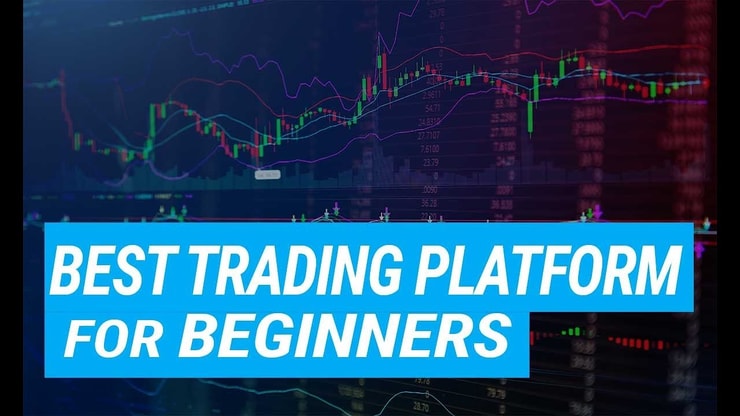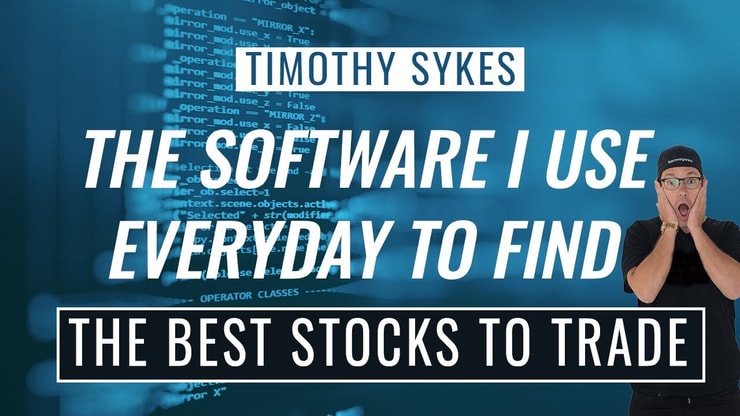Yahoo Finance portfolio in Canada gives traders a way to track their positions, analyze stocks, and stay on top of market movements — all in one place. With real-time stock quotes, Canadian market integration, and customizable watchlists, it’s a practical tool for anyone serious about monitoring their trades. Whether you’re tracking TSX stocks or U.S. tickers, Yahoo Finance helps you stay organized and informed without jumping between platforms.
If you’re trading in Canada and want a simple, reliable way to monitor your portfolio across markets — this breakdown shows how to get the most out of Yahoo Finance’s tools. From portfolio tracking to real-time alerts, we’ll cover what matters and where the platform fits into your trading workflow.
I’ll answer the following questions:
- What is Yahoo Finance and how does it cater to Canadian investors?
- How has Yahoo Finance evolved to meet the needs of modern traders?
- What are the key features of Yahoo Finance portfolio for Canadians?
- How does Yahoo Finance portfolio integrate global and Canadian market data?
- What tools does Yahoo Finance offer for stock screening and analysis?
- Can you export and import portfolio data on Yahoo Finance, and why is this important?
- What are the steps to setting up and managing your portfolio on Yahoo Finance?
- How does Yahoo Finance portfolio provide comprehensive market data and news?
Let’s get to the content!
Table of Contents
- 1 What Is Yahoo Finance?
- 2 Key Features of Yahoo Finance Portfolio for Canadians
- 3 Setting Up and Managing Your Portfolio
- 4 Benefits of Using Yahoo Finance Portfolio in Canada
- 5 Tips for Maximizing Your Yahoo Finance Experience
- 6 Potential Limitations and Considerations
- 7 Key Takeaways
- 8 Frequently Asked Questions
What Is Yahoo Finance?
Yahoo Finance is one of the most widely used free financial platforms, giving traders access to stock quotes, news, and portfolio tools. It’s especially useful for Canadian investors thanks to its localized market data — including TSX coverage, economic news, and CAD-specific tools. You can track stocks, set alerts, and view news in one place, whether you’re trading Canadian small caps or U.S. tech giants.
Understanding the stock market’s opening times is crucial for trading effectively. The stock market open in Canada has its own schedule, which can significantly impact your trading strategy. Knowing when the market opens is the first step in planning your trades and being ready to act on opportunities. For a detailed breakdown of what you need to know about the stock market open in Canada, including timings and how they can affect your trading, this article provides all the essential details.
Brief History and Evolution
From its inception, Yahoo Finance has been a game-changer. It’s evolved from a simple news aggregator to a sophisticated platform offering detailed financial information and tools. This evolution mirrors the dynamic nature of the markets, adapting to the needs of traders and investors who demand more than just basic data. It’s a reflection of the changing tides in finance, where information is power and timing is everything. Yahoo Finance has been riding the wave, bringing insights and updates that keep Canadian traders ahead of the curve.
Yahoo Finance’s Significance in Canada
For Canadian traders, Yahoo Finance offers quick access to TSX data, sector breakdowns, and macroeconomic indicators like the jobs report or crude oil prices. If you’re trying to understand how U.S. market movement or currency shifts might affect your Canadian stocks, it’s a convenient hub to get context fast. It’s not a full-featured trading platform — but it’s a strong companion tool.
Being aware of stock market holidays in Canada is just as important as knowing the trading hours. These holidays can affect trading patterns and result in higher volatility around the days they occur. For traders, it’s vital to plan for these dates to avoid any surprises and to adjust strategies accordingly. To stay on top of the stock market holidays and the important dates to know, this resource is indispensable for keeping your trading calendar up-to-date.
Key Features of Yahoo Finance Portfolio for Canadians
The Yahoo Finance portfolio tool lets Canadian traders build watchlists, track real-time stock quotes, and organize positions by sector, market cap, or performance. You can monitor both Canadian and global markets, view historical price data, and get basic charting and analysis — all in a clean, browser-based dashboard.
Expanding your trading knowledge through education is a powerful way to enhance your trading skills. Stock market courses in Canada offer a range of options for traders of all levels to learn new strategies and refine their approach. Whether you’re a beginner or an experienced trader, there’s always more to learn. To discover the best stock market courses in Canada and how to choose the right one for you, check out this guide for valuable insights and recommendations.
More Breaking News
- WULF Stock Soars: What’s Next?
- ORIC Pharmaceuticals: Exploring Recent Challenges and Prospects
- AgEagle’s Skyward Surge: Analyzing the Soaring Numbers
- New Fortress Energy’s LNG Deal Faces Major Hurdles; Dispute Causes Stock Dip
Real-Time Stock Quotes and Updates
Real-time stock quotes are essential if you’re actively managing positions or scanning for momentum plays. Yahoo Finance gives you minute-to-minute pricing updates on both TSX and U.S. markets. While it’s not as fast or detailed as a pro platform, it’s more than enough for monitoring price action and volume trends during trading hours.
Integration with Global and Canadian Markets
Yahoo Finance portfolio doesn’t just stop at the border; it integrates global market data with a Canadian lens. This means you can compare your investments with international trends, understand how U.S. market shifts might affect Canadian stocks, and make trade decisions based on a comprehensive view of the financial world. It’s about having a global perspective while wearing a maple leaf on your sleeve.
Curated Stock Watch Lists & Categories
Curated watchlists and categories in Yahoo Finance portfolio are like your personal financial assistant, helping you keep an eye on the stocks that matter most to you. Whether it’s a list of high-potential stocks or a category of market movers, these tools help you organize your trading day. They’re about making sense of the market noise, focusing on what’s important for your investment strategy.
Stock Screeners and Analysis Tools
Yahoo Finance offers basic screening tools to help you find trade ideas based on price, volume, P/E ratios, and more. While it’s not as advanced as pro-level platforms, it’s solid for spotting momentum stocks, undervalued plays, or sector movers. Combine screeners with watchlists for a simple but effective research workflow.
When it comes to trading simulators, StocksToTrade is first on my list. It’s a powerful trading simulator that gives your real-time price quotes and accurate fills. I helped to design it, which means it has all the trading indicators, news sources, and stock screening capabilities that traders like me look for in a platform.
I use StocksToTrade to scan for news, tweets, earning reports, and more — all covered in its powerful news scanner. It has the trading indicators, dynamic charts, and stock screening capabilities that traders like me look for in a platform. It also has a selection of add-on alerts services, so you can stay ahead of the curve.
Grab your 14-day StocksToTrade trial today — it’s only $7!
Exporting and Importing Portfolio Data
Being able to export and import your Yahoo Finance portfolio gives you control over your trade history. It’s useful for tracking performance over time, syncing data with spreadsheets or other tools, and reviewing your past setups. If you’re managing multiple accounts or backtesting trade ideas, this flexibility matters.
Setting Up and Managing Your Portfolio
Setting up your Yahoo Finance portfolio is straightforward. Add tickers manually or import them. Customize by price, volume, market cap, or currency. You can track ETFs, dividend stocks, or speculative plays in separate lists. Organize them by sector, performance, or type to keep your workflow clean.
Getting Started with Yahoo Finance Portfolios
Setting up your Yahoo Finance portfolio is the first step on your trading journey. It’s about laying the foundation for your investment tracking. You’ll input your stocks, watch the markets, and see how your investments perform. This setup is your command center, where you’ll make the calls, watch your gains, and manage your losses.
Adding, Editing, and Tracking Stocks and ETFs
Adding, editing, and tracking stocks and ETFs in your portfolio is like being the captain of your own financial ship. You’re at the helm, steering through the markets, adjusting your course as needed. It’s about personalizing your trading experience, making sure your portfolio reflects your strategies and goals.
Organizing and Customizing Your Portfolio View
Your portfolio layout should help you move faster — not waste time. Use filters and column customizations to group stocks by sector, flag top performers, or track unrealized gains. If you’re watching multiple strategies (like long-term holdings vs short-term trades), segment them into different watchlists for cleaner tracking.
Benefits of Using Yahoo Finance Portfolio in Canada
The benefits of using Yahoo Finance portfolio in Canada are numerous. It’s a platform that provides a comprehensive view of your financial picture, from the broad strokes of market trends down to the fine details of your personal investments. It’s about leveraging a wealth of market data and insights, no matter which city or market you’re focused on. With tools that cater to the tracking of diverse currencies and the ability to create a personalized blog of your financial journey, Yahoo Finance portfolio is an invaluable ally in navigating the Canadian financial landscape.
Comprehensive Market Data and News
Yahoo Finance portfolio offers a treasure trove of market data and news, a one-stop-shop for the financial information you need. It’s about staying informed, whether it’s the latest on the stock market, insights into market trends, or the impact of the jobs report on the economy. Knowledge is power, and with Yahoo Finance, you’re well-equipped.
Social Interaction and Community Insights
The platform’s social interaction and community insights provide a pulse on what others are thinking and doing in the market. It’s about tapping into collective wisdom, gaining insight from fellow traders, and perhaps even finding a mentor. This social layer adds depth to your trading strategy, offering perspectives that can help refine your approach.
Mortgage Rates and Financial Planning Tools
Beyond stocks, Yahoo Finance portfolio provides tools for broader financial planning, including mortgage rates. It’s about seeing the bigger financial picture, understanding how various elements like interest rates and the labour participation rate can impact your money. It’s about being financially savvy, not just stock-wise.
Tips for Maximizing Your Yahoo Finance Experience
To maximize your Yahoo Finance experience, it’s all about strategy and smart use of the platform’s features. It’s setting alerts for your favorite currencies, understanding the symbols that populate your portfolio, and aligning your trading actions with market expectations. Whether you’re in the heart of Canada’s financial districts or managing your investments remotely, these tips are about making the platform work for you, ensuring that your financial blog or portfolio is as robust and informed as possible.
Utilizing Advanced Features and Tools
To truly maximize your Yahoo Finance experience, dive into the advanced features and tools. It’s about leveraging every asset at your disposal, from in-depth analysis tools to customizable alerts. These features are designed to enhance your trading, providing you with the insights to make informed decisions.
Staying Updated with Yahoo Finance News and Alerts
Staying updated with Yahoo Finance news and alerts is about keeping your finger on the market’s pulse. It’s about being proactive, not reactive, in your trading strategy. These updates can be the difference between capitalizing on a market move and missing out. It’s about staying ahead, always.
Engaging with the Yahoo Finance Community
Engaging with the Yahoo Finance community is about connecting with like-minded individuals. It’s about sharing insights, learning from others, and building a network of traders who are as serious about making money as you are. It’s about being part of a community that’s focused on financial success.
Potential Limitations and Considerations
Yahoo Finance is useful — but it has limits. Real-time data can lag. There’s no level 2, no order routing, and limited customization for advanced traders. It’s not built for execution — just for tracking and research. For high-frequency setups or complex options strategies, you’ll need more advanced software.
Data Accuracy and Real-Time Updates
While Yahoo Finance portfolio is a powerful tool, it’s important to remember the data disclaimer. No platform can guarantee absolute accuracy, and real-time updates are subject to slight delays. It’s about using the data as a guide, not gospel. In trading, as in life, there are no guarantees — only calculated risks.
Comparison with Other Canadian Financial Platforms
Compared to Canadian platforms like Questrade or Wealthsimple, Yahoo Finance is more of a research and tracking tool than a full-service broker. You can’t place trades through it, but it does offer more flexibility for organizing watchlists and staying updated on Canadian economic news. Use it alongside your brokerage — not instead of one.
Security and Privacy Concerns
In the digital age, security and privacy concerns are paramount. While Yahoo Finance takes measures to protect your data, it’s also your responsibility to ensure your financial information is secure. It’s about being vigilant, using strong passwords, and being aware of the risks. In finance, protecting your money includes safeguarding your data.
Key Takeaways
The key takeaways from using Yahoo Finance portfolio in Canada are clear: it’s a robust tool that offers a wealth of information and features tailored to Canadian traders. It’s about harnessing the power of real-time data, market insights, and community wisdom to make informed trading decisions. Remember, it’s not just about the trades you make, but how you manage your portfolio and stay informed that counts.
Trading isn’t rocket science. It’s a skill you build and work on like any other. Trading has changed my life, and I think this way of life should be open to more people…
I’ve built my Trading Challenge to pass on the things I had to learn for myself. It’s the kind of community that I wish I had when I was starting out.
We don’t accept everyone. If you’re up for the challenge — I want to hear from you.
Apply to the Trading Challenge here.
Trading is a battlefield. The more knowledge you have, the better prepared you’ll be.
How do you keep track of your stocks? Let me know in the comments — I love hearing from my readers!
Frequently Asked Questions
How does Yahoo Finance’s portfolio feature compare to other platforms in Canada?
Yahoo Finance’s portfolio feature stands out for its integration with both Canadian and global markets, offering a breadth of data and tools that cater to a variety of trading styles. It’s about providing a comprehensive view that’s as expansive as Canada’s landscapes.
Can I link my bank account or other financial accounts to Yahoo Finance?
Yes, you can link various financial accounts to Yahoo Finance for a more integrated view of your finances. It’s about convenience and efficiency, having all your financial data in one place.
What support and resources are available for Canadian users?
Canadian users have access to localized support and resources, including a dedicated Canadian version of the site, customer service, and community forums. It’s about having a support system that understands the Canadian financial landscape.











Leave a reply